ČECHY / BÖHMEN
Čechy

|
Czechoslovakia
1918-1939 |
||||||
|
ęęęęęęęęęęęęęęęęęęęęęęęęęęęęęęęęęęęęęęęęęęęęęę |
||||||
|
Protektorat Böhmen und Mähren |
15.03.1939-08.05.1945 |
|||||
|
On the 19th of September 1939 the arms of
Czechoslovakia of 19th of May 1919 were readopted for the Protectorate. The
larger arms were quarterly of Bohemia and Moravia, using the drawings of 1920
in their design. Government decree No. 222/1939 Sb. of 19 Sept. 1939.
Smaller Protectorate Emblem Art.4. The lesser arms of the
Protectorate of Bohemia and Moravia was as follows: in a red shield, a
silver, double queued, right-looking, open-mouthed, crown-wearing lion
rampant with tongue and claws drawn out, all in gold colour). |
||||||
|
Greater Protectorate emblem Art.5. The greater emblem of the Protectorate of Bohemia and Moravia has a quartered shield. Its top right and bottom left fields carry the emblem of Bohemia: in a red field, a silver, two-tailed, right-looking, open-mouthed, crown-wearing lion rampant with its tongue and claws drawn out, all in gold colour. The top left and bottom right fields carry the emblem of Moravia: in a blue field, a right-looking, silver-and-red chequered eagle with a coronet and drawn-out talons, all in gold colour.
|
||||||
|
|
|
|||||
|
Presidential
Flag |
Flag
of the Reichsprotektor |
|||||
|
During the period 1939 to 1945 the duties
of the Castle Guard were performed
by the 1st Battalion of the Government
Army The Government Army (Vládní vojsko), also known as the Army of the Protectorate (Regierungs-truppen), was the military
force of the Protectorate of Bohemia and Moravia during the German occupation
of Czechoslovakia.
Arms: Quarterly of Bohemia and Moravia Supporters: Two swords in saltire and an
eagle facing to the sinister, a swastika in its claws.
Author: Unknown Date:1939 - 1945 Materiál: gold Technic: molded
and pressed metal Owner:: Muzeum
Vysočiny Havlíčkův Brod, příspěvková organizace Include Arts
and Crafts, Numismatic exhibits The performance badge of the government
troops of the Protectorate of Bohemia and Moravia was donated in three grades
in 1944 by the Wehrmacht representative and commander of the Military District
VIII (Silesia) for the stationed government troops of the Protectorate of
Bohemia and Moravia for repeated commitment to tasks of the Wehrmacht. As a
sign of this recognition, the performance badge was awarded with a
certificate. The bronze, silver or gilt badge shows in
the center the German national eagle, on whose breast the greater coat of
arms of the protectorate Bohemia and Moravia, consisting of the coats of arms
of Bohemia (lion) and Moravia (eagle) is laid up. Behind the imperial eagle,
two diagonally crossed swords are visible, the tips of which emerge from the
eagle’s wings. On both sides of the eagle is a network of linden leaves and
lime blossom, the national plant of the Czech Republic.
Bohemia
and Moravia Gendarmerie 1939-1945 Cap badge |
||||||
|
Czechoslovakia
1944-1990 |
||||||
|
The uncomfortable merging of the Czechs and
the Slovaks was also reflected in the arms of the republic. In them the
Bohemian element always dominated and that was not surprising because this
part had from the outset the economic and cultural superiority. It was only
after the communist regime of 1968 was established, that the Slovak economy
(mainly the arms industry) improved and the eastern part of the country
surpassed the old Bohemia. Initially the Bohemian coat of arms with
the lion was used for the new republic of 1918. To this was added in 1920 the
coat of arms of Slovakia, which is a variant of the Hungarian, as an
escutcheon on the shoulder of the lion. In the middle and larger arms, elements for
the other parts of the country were also included, but the bohemian
superiority continued to exist, among other things, because of the
supporters, which, like the Bohemian lion, are crowned and have a double
tail. With the breaking up of Czechoslovakia also
this heraldic controversy came to an end. |
||||||
|
Česka Republiká |
1990-present |
|||||
|
The Czech National Council, adopted a greater and a lesser national emblem as designed by Jiri Louda, by Act No. 68/1990 Sb. of March 13, 1990.
Para 1/Art.2 The lesser national emblem of the Czech Republic consists of a red shield showing a silver, right-looking, two-tailed roaring lion rampant with golden claws, a golden, thrust-out tongue, and a golden heraldic crown.
After the breakup of the Czechoslovak Fedwweration, the Czech National Council, by Act No.3/1993 Sb. of December 17, 1992, adopted the two national emblems of the Czech Republic as the national emblems of the now independent Czech Republic except that for the lesser emblem the Spanish shield was replaced by a Gothic one.
Para 1/Art.1 The greater national emblem of the Czech Republic consists of a quartered shield with the first and fourth red fields showing a silver, right-looking, roaring lion rampant with golden claws, a golden tongue thrust out, and a golden heraldic crown. In the second, blue field is a silver-and-red chequered, right-looking eagle with a golden beak, golden talons, and a golden heraldic crown, in the third, golden field - a black, right-looking eagle with a red beak, red talons, a golden heraldic crown, and, on the chest, a silver crescent adorned with clover trefoils at each end and a little cross in the middle. |
||||||
|
Seal w
Presidential
flag
Chamber
of Deputies |
||||||
|
Foreign Intelligence Service |
||||||
|
The Office for Foreign Relations and
Information (ÚZSI) (Úřad pro
zahraniční styky a informace) is the main foreign intelligence
service of the Czech Republic responsible for the collection, analysis and
dissemination of ntelligence. It is mandated to provide accurate and timely
intelligence to the Government of the Czech Republic that is vital to support
and protect foreign and economic policy interests. The service also protects the country from
terrorism, the proliferation of weapons of mass destruction, economic crimes,
etc. Powers of the service are determined by the Act N.153/1994 Coll., the Intelligence
Services of the Czech Republic Act which also lays out the structure of the
organization. Officers of the service are mandated to act in accordance with
the agency's code of ethics. The badge
is of the Bohemian Lion and a twig of lime and the motto SINE IRA ET STUDIO (Without Anger and Ambition) |
||||||
|
National Intelligence Agency |
||||||
|
The Security Information Service (BIS) (Bezpečnostní informační služba),
is the primary domestic national intelligence agency of the Czech Republic The BIS is a statutory body under the Act
No. 154/1994 Coll., on the Security Information Service and it is strictly
apolitical and has no police powers - BIS cannot detain, arrest or
interrogate suspects. The service reports to the Government, Prime Minister
and President of the Czech Republic and its activities are regulated and
controlled by the Government, Permanent Commission of the Chamber of
Deputies\ and its own internal audit. The service is headed by the Director
who is appointed by the Prime Minister with consent of the Committee on
Security of the Chamber of Deputies. The badge
is of the arms of state supported by an eagle
with the motto AUDI
VIDE TACE (Hear,
See and don’t talk about) |
||||||
|
Police |
||||||
|
Police of the
Czech Republic (Policie České
republiky) is the national law enforcement agency of the Czech Republic.
It was established on 15 July, 1991, by the Czech National Council Act of 21
June 1991, with headquarters in Prague. Their mission
is protect citizens, property and public order. Czech state police cooperates
with municipal police departments, which are present in local municipalities. The Czech police is subordinated to the
Ministry of the Interior. It consists of a police presidium, departments with
nationwide authority, regional police headquarters and departments
established within the regional headquarters. The law establishes 14 regional
police headquarters. Their territorial districts coincide with the
territorial districts of 14 regions of the Czech Republic.
Sleeve
patch Protection services of
the Police of the Czech Republic |
||||||
|
|
|
|||||
|
Badge |
Arms |
|||||
|
The explanation of the devices at their presentation was, (in translation from czech): Colors: The colors of the Czech Republic are white, red and blue. White symbolizes purity, red the blood spilled by the patriots for the freedom of their homeland, and blue the foggy sky. The light blue filed of the emblem refers to the colors of the national flag, and also to the fact that the protectors perform the service in a civilian suit, the dark blue background is the color of the service overalls. This symbolizes that, if necessary, the team is able to successfully carry out combat activities to protect the lives and health of the entrusted persons. Shield: The shield is the symbol of protection. It is a defensive tool to keep of the enemy and for personal protection of soldiers. The shield had a protective and decorative function throughout its history. Lion: A lion ws the emblem of Przemysl Otakar. Shield with a lion: A shield with a Czech lion on the sign of a unit symbolizes that the department by its activities performs the will of the state to protect important persons residing in the territory of the Czech Republic to which it is bound by international treaties. Position of the sword and shield: The position of the sword and the shield is of those of a knight ready to fight. Sword: A sword is a symbol of power, justice, faith and loyalty. The sword is referred to as the "King of Arms" For thousands of years the sword was used as the main weapon until the firearms were invented. If one picks up a sword hilt, it will change a lot. It gains strength and sense of responsibility. The inner voice forces him to lift the sword and to do with what he has committed to his oath. Two swords and shields: A pair of swords and shields point out to us that a team of several members of the team cooperates with personal protection. The protection of prominent persons and their settlements is of a collective nature. There is no place for unreliable individualists. It's an expression of friendship and the mutual cooperation of the members of the unit. The motto: AD OMNIA PARATUS (Prepared for All) expresses the readiness of the members of the department to fulfill all the tasks assigned to them. Ć Also see: Význam symboliky znaku on internet |
||||||
|
Regional Police Corpses |
||||||
|
|
||||||
|
|
|
|||||
|
Praha |
Karlovarský |
|||||
|
|
|
|||||
|
Ústecký |
Liberecký |
|||||
|
|
|
|||||
|
Plzenský |
Středočeský |
|||||
|
|
|
|||||
|
Českébudějovický |
Královehradecký |
|||||
|
|
|
|||||
|
Pardubický |
Jihlavský |
|||||
|
|
|
|||||
|
Olomoucký |
Brnénský |
|||||
|
|
|
|||||
|
Ostravský |
Zlinský |
|||||
|
Armed Forces |
||||||
|
The Armed Forces of the Czech Republic (Ozbrojené síly České republiky) are the military forces of the Czech Republic. They consist of the Army of the Czech Republic (Armáda České republiky), the Military Office of the President of the Republic and the Castle Guard, as defined by the Act No. 219/1999, on the Armed Forces of the Czech Republic. . The term Armed Forces of the Czech Republic is defined by law. However, in several Czech military documents it is also used for the actual Army of the Czech Republic. For example, the 2004 Doctrine of the Armed Forces of the Czech Republic is called Doktrína Armády České republiky in Czech (i.e., Doctrine of the Army of the Czech Republic).Moreover, in the 2011 White Paper on Defence the term armed forces is understood differently from its definition in Act No. 219/1999 and includes Land, Air, Special and Support Forces, Military Police, Military Intelligence, Military Office of the Czech President and Castle Guard.On the other hand, 2015 Security Strategy of the Czech Republic states that "the armed forces, with the Army of the Czech Republic at their core, play a key role in supporting the implementation of the defence policy."
Military
Office of the President |
||||||
|
The Prague Castle Guard or simply the Castle Guard (Czech: Hradní stráž) is a specific and autonomous unit of the Armed Forces of the Czech Republic directly subordinate to the Military Office of the President of the Czech Republic. Its main task is to guard and defend the seat of the President of the Czech Republic at the Prague Castle During the period 1939 to 1945 its duties were performed by the 1st Battalion of the Government Army The Government
Army (Vládní vojsko), also known as
the Army of the Protectorate (Regierungstruppen),
was the military force of the Protectorate of Bohemia and Moravia during the
time period of the German occupation of Czechoslovakia. |
||||||
|
|
Ministry of Defense |
|
||||
|
|
|
|||||
|
Ministry
of Defense Arms |
Ministry
of Defense Logo |
|||||
|
Ć http://www.acr.army.cz/assets/vystroj/ruk-znaky-mo-1_3.jpg |
||||||
|
Armed Forces |
||||||
|
The Army of the Czech Republic (Armáda České republiky, AČR) comprises the Czech Land Forces, the Czech Air Force and support units. From the late 1940s to 1989, the extensive Czechoslovak People's Army (about 200,000) formed one of the pillars of the Warsaw Pact military alliance. After the dissolution of Czechoslovakia, the Czech Republic is completing a major reorganisation and reduction of the armed forces, which intensified after the Czech Republic joined NATO on 12 March 1999. As defined by the Czech Law No. 219/1999 Coll., the Armed Forces of the Czech Republic (Ozbrojené síly České republiky) are the military forces of the Czech Republic. They consist of the Army of the Czech Republic, the Military Office of President of the Republic and the Castle Guard
Emblem
of the Czech Armed Forces and Cap Badge in gold |
||||||
|
General
Staff
Ć http://www.acr.army.cz/assets/vystroj/ruk-znaky-gs-1_3.jpg |
||||||
|
Joint |
Forces |
|||||
|
Joint Forces |
||||||
|
Land Force |
||||||
|
Headquarters
of Ground Forces |
||||||
|
Units |
||||||
|
Combat Troops |
Support Units of combat |
Combat Security Units |
||||
|
Ć http://www.acr.army.cz/vystroj/rukavove-znaky-vojaku-pozemnich-sil-acr-100034/ |
||||||
|
Regional Military
Headquarters and Infantry Companies |
||||||
|
Ć http://www.acr.army.cz/images/id_88000_100000/99780/Ruk-znaky-GS-2V.jpg |
||||||
|
Air
Force |
||||||
|
Cech
Air Force Motto: Our sea is in the air In 1993, it was divided into the Czech Air Force and the Slovak Air Force |
||||||
|
Units |
||||||
|
|
|
|||||
|
21 Tactical aviation base |
211 Tactical squadron |
|||||
|
|
|
|||||
|
212 Tactical squadron |
213
Training squadron |
|||||
|
|
|
|||||
|
22 Helicopter air force base Sedlec |
221
Helicopter squadron |
|||||
|
|
|
|||||
|
222 Helicopter squadron |
24
Air Transportation base Praha-Kbely |
|||||
|
|
|
|||||
|
241 Traffic squadron |
242
Transport and special squadrons |
|||||
|
|
|
|||||
|
243 Helicopter squadron |
25
Air defense regiment Strakonice |
|||||
|
|
|
|||||
|
251 Air defense missile |
252
Air defense missile |
|||||
|
|
|
|||||
|
26 Command, Control and Survey Regiment Stará
Boleslav |
Airport
Administration, Pardubice |
|||||
|
Military Police Corps |
||||||
|
The Military Police Corps was set up on 21 January 1991. Within the provisions of the Czech Law No. 300/2013 Col., on the Military Police, they are responsible for police protection of armed forces, military facilities, military material and other state property controlled by the Ministry of Defence of the Czech Republic. |
||||||
|
Vojenské
policie Coat of arms |
||||||
|
|
|
|||||
|
Main
Military Police headquarters, Prague |
Military
Police Headquarters Olomouc |
|||||
|
|
|
|||||
|
Headquarters
Protective Services Military
Police Prague |
Military
Police Headquarters Tabor |
|||||
|
Military
Police Department in Banska Bystrica [2005-2014] |
||||||
|
Military Intelligence |
||||||
|
Military Intelligence is one of three intelligence services of the Czech Republic. It was established by the Act No. 289/2005 Coll., on Military Intelligence, as subsequently amended, and is a succession organization to Military Counterintelligence and to the Military Intelligence Service. It is a united intelligence service of the Czech Republic which integrates the intelligence and counterintelligence activities. |
||||||
 © Hubert de Vries
© Hubert de Vries












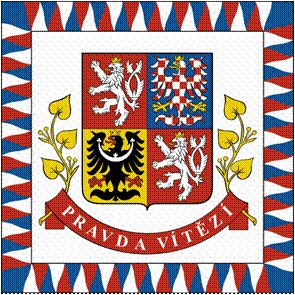
















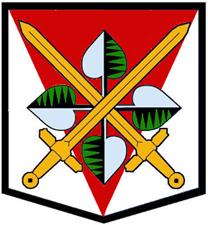
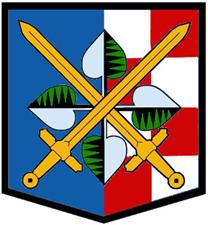

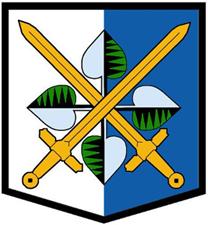
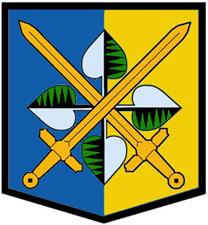
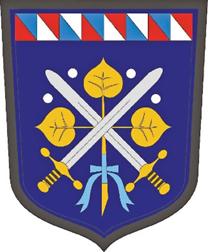
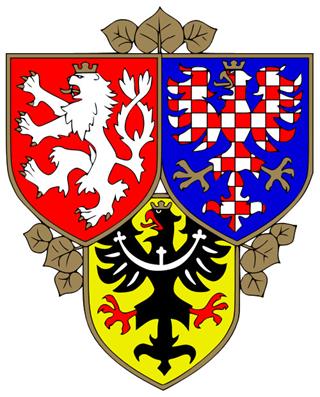
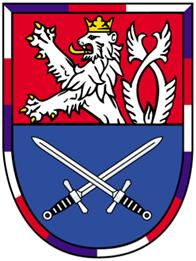
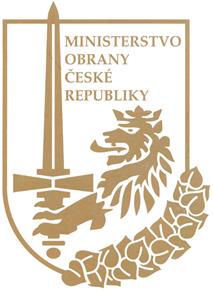
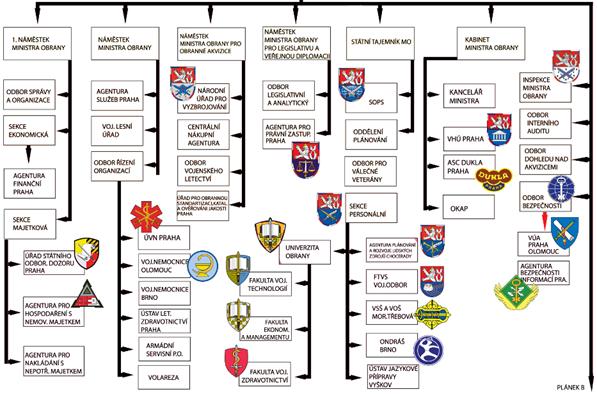
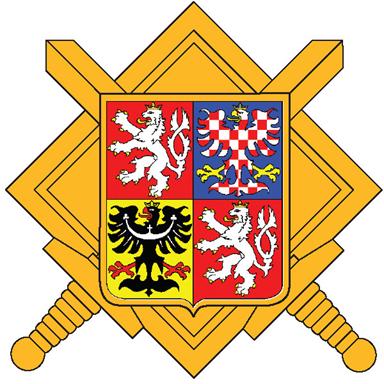
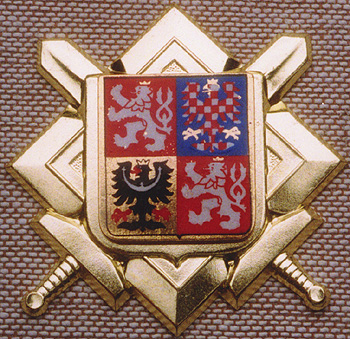
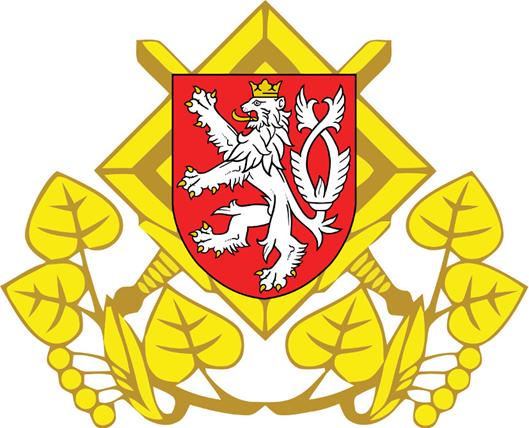
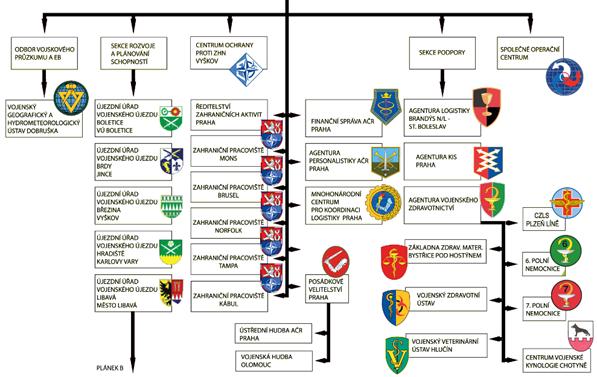
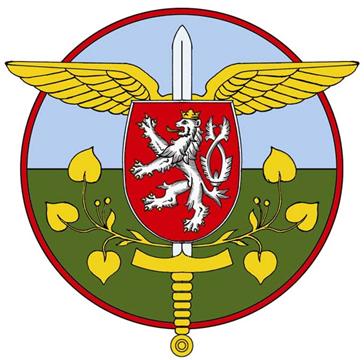
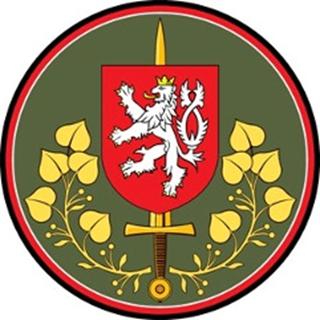
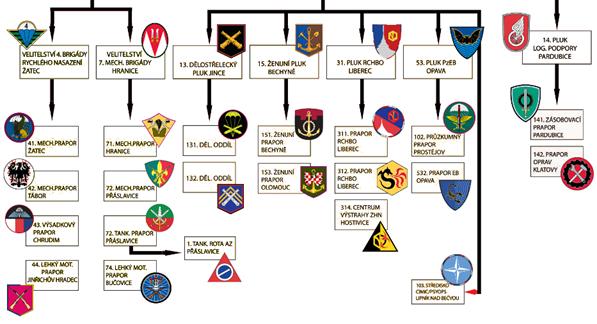
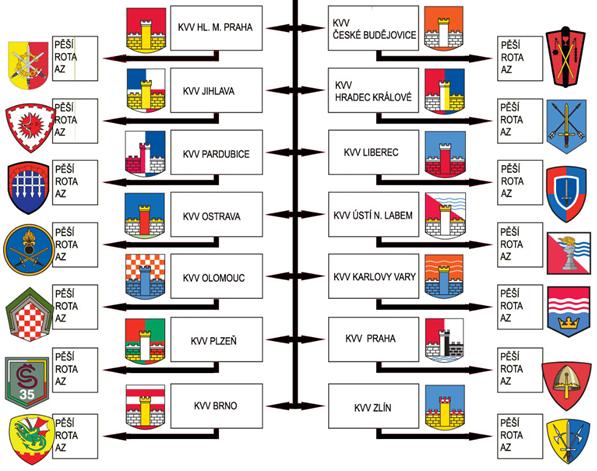

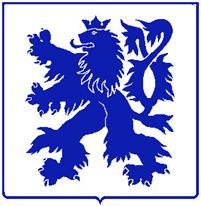
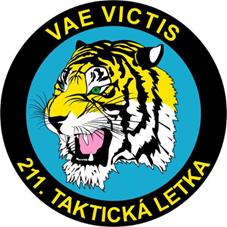
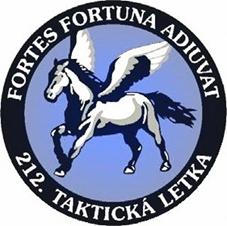
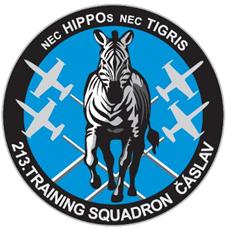

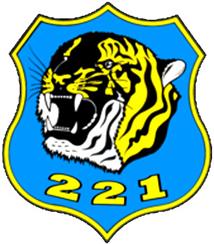
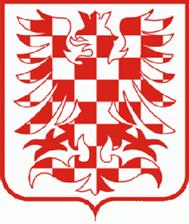
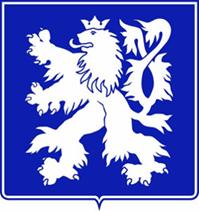
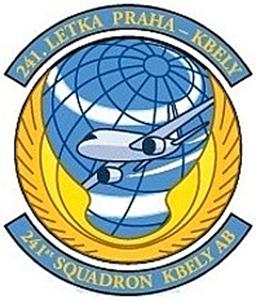
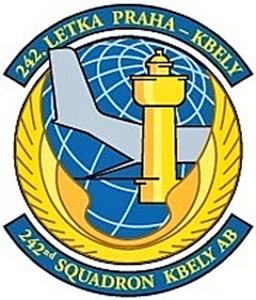
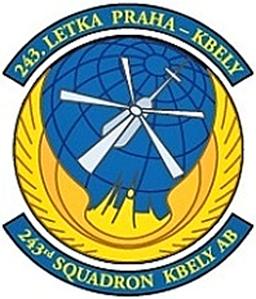
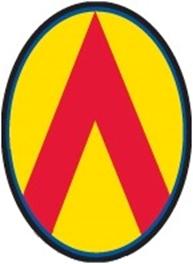
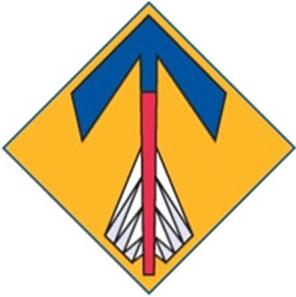
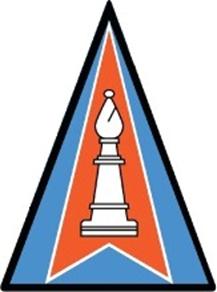
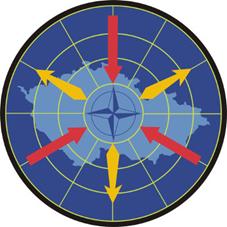
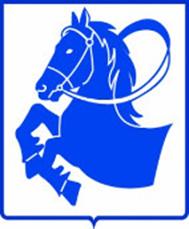
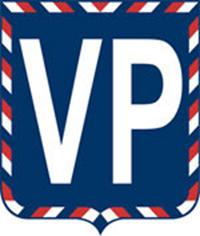
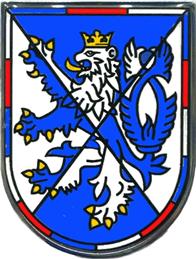
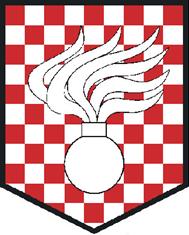
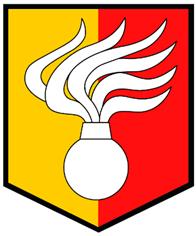
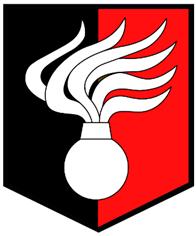
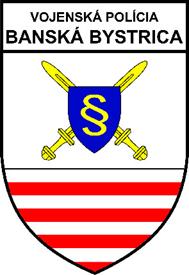

 Heraldry of the World
Heraldry of the World